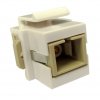I'm thinking about this pivot rack:
http://www.kendallhoward.com/8U-Pivot-Frame-Wall-Mount-Rack.

This wall mount is 12" deep. Does anyone have any experience with this type of rack? Seems like a good idea?
http://www.kendallhoward.com/8U-Pivot-Frame-Wall-Mount-Rack.
This wall mount is 12" deep. Does anyone have any experience with this type of rack? Seems like a good idea?


